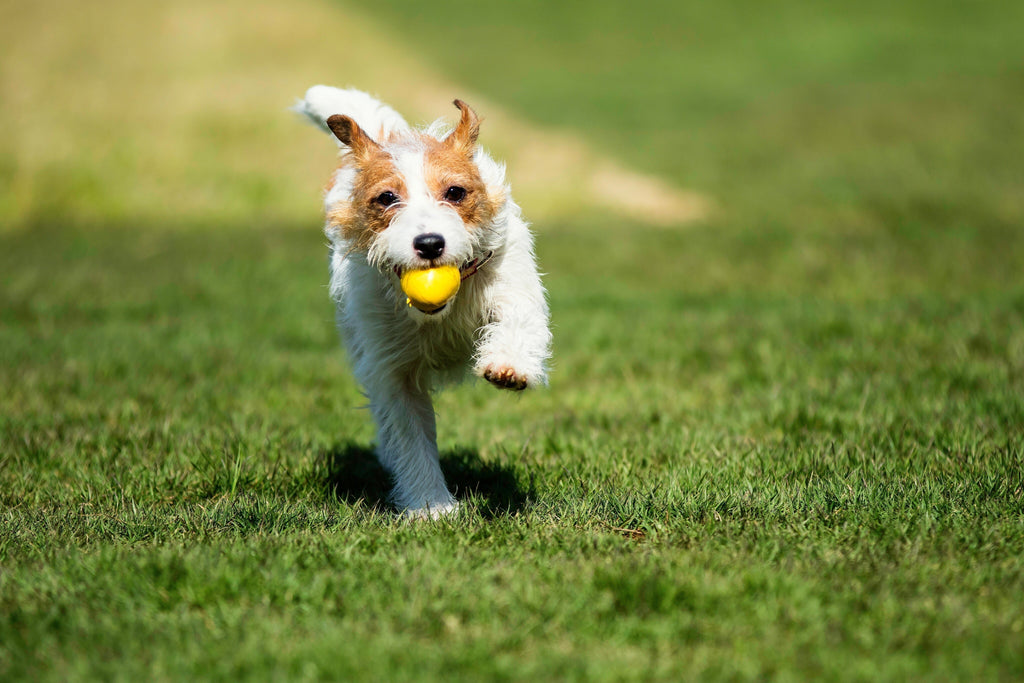Is Salmon Good For My Dog?

If you’ve ever watched your dog’s tail wag uncontrollably at the mere smell of salmon cooking, you’re not alone! Dogs love salmon, and it’s not just because it’s delicious. There are some fascinating reasons behind their enthusiasm for this fishy treat, and plenty of good reasons to consider adding it to their diet.
What Makes Salmon Irresistible to Dogs?
- The Aroma: Dogs have an incredible sense of smell, and salmon’s rich, savoury scent is practically irresistible to them. It’s like a beacon of flavour wafting through the air.
- The Taste: Salmon’s natural umami flavour is a hit with most canines. Its slightly fatty texture and juicy flakes are a treat for their taste buds.
- The Instinctual Draw: Dogs are natural carnivores, and salmon’s high protein content makes it a satisfying and instinctually appealing food.

Health Benefits of Feeding Salmon to Your Dog
Beyond being tasty, salmon offers a host of nutritional benefits that can support your dog’s overall health. Here are some of the key perks:
1. Omega-3 Fatty Acids
Salmon is loaded with omega-3 fatty acids, which are excellent for your dog’s:
-
Skin and Coat: Omega-3s help reduce inflammation, promoting a shiny coat and healthy skin.
-
Joints: These healthy fats can ease arthritis symptoms in older dogs by reducing joint inflammation.
-
Brain Function: Omega-3s support cognitive function, making salmon especially beneficial for puppies and senior dogs.
2. High-Quality Protein
Protein is essential for muscle development and overall energy. Salmon provides lean, digestible protein, making it a great option for active dogs or those needing a high-protein diet.
3. Rich in Vitamins and Minerals
Salmon is a powerhouse of essential nutrients, including:
-
Vitamin D: Supports bone health and immune function.
-
B Vitamins: Aid in energy production and nervous system health.
-
Selenium: Acts as an antioxidant, boosting immune health.
4. Allergy Relief
For dogs with food sensitivities, salmon is often a safer protein choice. It’s a common ingredient in hypoallergenic dog foods and can help reduce itchy skin and digestive upset caused by other proteins.
Why Choose Salmon Over Other Types of Fish?
While many types of fish offer great nutritional benefits for dogs, salmon stands out for several reasons:
- Higher Omega-3 Content: Compared to other common fish like cod or tilapia, salmon is particularly rich in omega-3 fatty acids. This makes it an excellent choice for reducing inflammation, promoting a shiny coat, and supporting brain health.
- Lower Mercury Levels: Salmon, especially wild-caught varieties, tends to have lower mercury levels than larger fish like tuna or swordfish, making it a safer choice for regular consumption.
- Rich Flavour and Texture: Salmon’s natural flavor and texture are more appealing to many dogs than leaner, milder fish. It’s more likely to entice picky eaters.
- Nutrient Density: Salmon is a powerhouse of vitamins and minerals, such as vitamin D, B vitamins, and selenium, which are often present in higher amounts compared to other fish.
Things to Keep in Mind When Feeding Salmon to Dogs
While salmon has many benefits, there are a few important considerations to ensure it’s a safe addition to your dog’s diet:
- Cook It Thoroughly: Raw or undercooked salmon can contain harmful bacteria, parasites, and other pathogens.
- Watch the Bones: Salmon bones are small and brittle, posing a choking hazard or risk of internal injury. Debone the fish carefully or opt for boneless fillets.
- Moderation is Key: Salmon is rich in fat, which can cause digestive upset or pancreatitis if given in excessive amounts. Stick to small portions as an occasional treat or supplement to their regular food.
- Avoid Seasonings: Salt, garlic, onions, and other seasonings commonly used in human salmon recipes can be toxic to dogs. Serve it plain and unseasoned.
- Choose High-Quality Sources: Opt for wild-caught salmon when possible, as farmed salmon can contain higher levels of contaminants like mercury and PCBs.

How to Serve Salmon to Your Dog
Here are a few easy and safe ways to include salmon in your dog’s meals:
- Petzyo Salmon & Oceanfish Kibble That Counts: We have done all the work for you, our Kibble that Counts offers Tasmania Salmon in the perfect portion for your dog with all the added health benefits!
- Cooked Fillets: Steam, bake, or grill plain salmon fillets (without oil or seasoning).
- Salmon-Based Dog Foods: Many high-quality dog foods use salmon as a primary ingredient.
- Salmon Treats: Look for dehydrated salmon treats or make your own by baking small salmon pieces.
- Mix-Ins: Flake cooked salmon into your dog’s kibble for an added burst of flavour and nutrition.

How to Know if Your Salmon Is Sourced Sustainably
With growing concerns about overfishing and environmental impact, ensuring your salmon is sustainably sourced has never been more important. Whether you're a seafood enthusiast or just someone aiming to make ethical choices, understanding how to identify sustainable salmon can help protect marine ecosystems and support responsible fishing practices.
- Marine Stewardship Council (MSC): MSC-certified seafood comes from fisheries that adhere to strict environmental standards and ensure minimal impact on marine habitats.
- Aquaculture Stewardship Council (ASC): For farmed salmon, the ASC label indicates responsible farming practices that prioritize water quality, habitat protection, and fair labor.
- Best Aquaculture Practices (BAP): This certification addresses environmental, social, and food safety standards for farmed seafood.
Salmon is not just a tasty treat but also a nutritional powerhouse for your dog. Its omega-3s, protein, and essential nutrients can contribute to better skin, a shinier coat, and overall improved health. As long as you prepare it safely and serve it in moderation, your dog will thank you.






